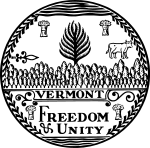| |||||||||||||||||
| |||||||||||||||||
 County results Wills: 60–70% 70–80% 80–90% >90% | |||||||||||||||||
| |||||||||||||||||
| Elections in Vermont |
|---|
 |
The 1942 Vermont gubernatorial election took place on November 3, 1942. Incumbent Republican William H. Wills ran successfully for re-election to a second term as Governor of Vermont, defeating Democratic candidate Park H. Pollard.

